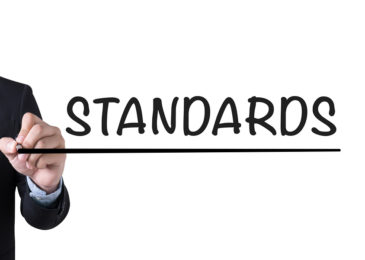Vehicles will get old with time and need to be replaced. Fleet vehicles are sensitive and must be in good condition at all times. Even if they have the best technology for fleet management, they will need a replacement at some point. The strategy used by the managers depend on numerous factors. It is an issue that needs to be carefully considered so that it is in line with the standards of the company. When determining the best replacement strategy, the following recommendations will be helpful.
Company Standards
 Fleet companies have standards that differ. However, they all have the purpose of making the services better, improving customer satisfaction and increasing productivity. Before establishing a vehicle replacement strategy, make sure that it is in line with the SOPs of the company. For instance, the SOPs may say that vehicles should be replaced after a certain number of years. Some businesses follow the standard that their vehicles must be in good condition at all times. In such cases, the replacement strategy has no option other than to follow these guidelines.
Fleet companies have standards that differ. However, they all have the purpose of making the services better, improving customer satisfaction and increasing productivity. Before establishing a vehicle replacement strategy, make sure that it is in line with the SOPs of the company. For instance, the SOPs may say that vehicles should be replaced after a certain number of years. Some businesses follow the standard that their vehicles must be in good condition at all times. In such cases, the replacement strategy has no option other than to follow these guidelines.
Current Needs
 More advanced vehicles are produced to increase comfort, efficiency and safety. The old vehicles become obsolete quickly especially if they are used to transport passengers. A few decades ago, vehicle air conditioners were not automatic, but today they are. All these developments serve the purpose of meeting consumer demands. VIP clients want vehicles with sophisticated technology like reclining and massaging seats, Wi-Fi and so on. Such needs may force a fleet manager or owner to replace the vehicles that they already have.
More advanced vehicles are produced to increase comfort, efficiency and safety. The old vehicles become obsolete quickly especially if they are used to transport passengers. A few decades ago, vehicle air conditioners were not automatic, but today they are. All these developments serve the purpose of meeting consumer demands. VIP clients want vehicles with sophisticated technology like reclining and massaging seats, Wi-Fi and so on. Such needs may force a fleet manager or owner to replace the vehicles that they already have.
Examine Possible Options
 Before replacing a vehicle, you can check if there are any possible options that are cheaper. There are many aftermarket technologies that can be added to vehicles to make them look and function more like recently manufactured vehicles. Repair, maintenance and restoration options are cheaper than replacing the whole vehicle.
Before replacing a vehicle, you can check if there are any possible options that are cheaper. There are many aftermarket technologies that can be added to vehicles to make them look and function more like recently manufactured vehicles. Repair, maintenance and restoration options are cheaper than replacing the whole vehicle.
Consider using experts to restore the interior as well as the exterior of a vehicle. Replacing important parts is an excellent way to save on costs.
Safety of Drivers and Passengers
 The safety of the vehicles is essential. Therefore, you must evaluate this consideration when planning the replacement strategy. In other words, a vehicle that ceases to be safe anymore must be removed from the fleet whether there is an immediate replacement or not. Some of the threats to safety include being involved in an accident, wear on important parts and age. Drivers should be trained to know when a vehicle is experiencing safety challenges that are beyond repair.
The safety of the vehicles is essential. Therefore, you must evaluate this consideration when planning the replacement strategy. In other words, a vehicle that ceases to be safe anymore must be removed from the fleet whether there is an immediate replacement or not. Some of the threats to safety include being involved in an accident, wear on important parts and age. Drivers should be trained to know when a vehicle is experiencing safety challenges that are beyond repair.
Customer Satisfaction
 Customers are the kings or queens of a business, and they must be treated as such. One of the main reasons fleet companies change or add new vehicles is to increase customer satisfaction. Apart from lacking important comfort and safety features, old vehicles often have problems that cause them to break down without warning. So, consider customer satisfaction when developing this replacement strategy.
Customers are the kings or queens of a business, and they must be treated as such. One of the main reasons fleet companies change or add new vehicles is to increase customer satisfaction. Apart from lacking important comfort and safety features, old vehicles often have problems that cause them to break down without warning. So, consider customer satisfaction when developing this replacement strategy.
There are a few other factors that determine the replacement strategy including preference, laws and the growth of a company. Pay close attention to them as well.





